
Christen Schiellerup Købke was a Danish painter, and one of the best-known artists from the Golden Age of Danish Painting.

Trold, der vejrer kristenblod is a bronze sculpture made by Niels Hansen Jacobsen (1861–1941).

Johan Frederik (Frits) Nikolai Vermehren, also known as Frederik Vermehren, a genre and portrait painter in the realist style.

Niels Hansen Jacobsen was a Danish sculptor and ceramist. He is most famous for creating the once controversial sculpture, Trold, der vejrer kristenblod. The name of the statue is taken from a story in Norse folklore where the hero hides in the troll's castle. Thereafter, whenever the troll enters the castle, he cries: "I smell a Christian man's blood!"
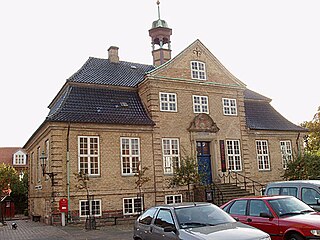
The Skovgaard Museum is an art museum in Viborg, Denmark. It is situated in the former town hall from 1728 next to Viborg Cathedral and holds a collection of works by four generations of the Skovgaard family of artists.

Rudolph Tegner was a Danish sculptor linked to the Symbolist movement. In the early 20th century his work caused considerable controversy in Denmark. A large number of his works are on display in the Rudolph Tegner Museum north of Copenhagen.
Kristen "Kræsten" Iversen was a Danish artist who is remembered both for his paintings and his painted glass windows. He was a member of the Bornholm school of painters and a professor at the Royal Danish Academy of Fine Arts .

The Bornholm Art Museum is situated on the Danish island of Bornholm, above the Sanctuary Rocks (Helligdomsklipperne) about 6 kilometres north-west of Gudhjem, Denmark.

Funen's Art Museum, formerly The Museum of Funen Diocese and Museum Civitatis Othiniensis, founded in 1885, is an art museum in Odense, Denmark. Funen's Art Museum operated as a part of the Odense City Museums.

Museum Jorn, Silkeborg, is an art museum located by Gudenåen in Silkeborg, Denmark. The museum holds the collections that were developed by Asger Jorn (1914–1973) from the early 1950s until his death in 1973, since when they have doubled in extent.

The Rudolph Tegner Museum is set in the middle of a protected area just south of Dronningmølle on Zealand's north coast, some 50 km north of Copenhagen, Denmark. The museum is dedicated to the oeuvre of the sculptor Rudolph Tegner (1873–1950). The museum exhibits some 250 of Tegner's sculptures as well as models in plaster, clay, bronze and marble. The surrounding terrain features 14 of his statues.
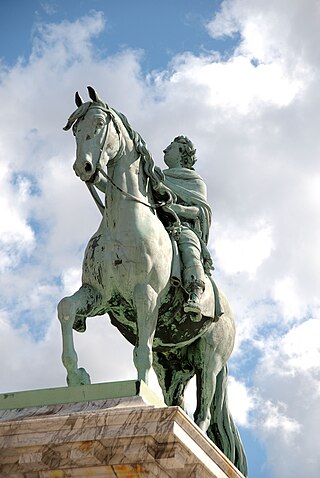
Danish sculpture as a nationally recognized art form can be traced back to 1752 when Jacques Saly was commissioned to execute a statue of King Frederick V of Denmark on horseback. While Bertel Thorvaldsen was undoubtedly the country's most prominent contributor, many other players have produced fine work, especially in the areas of Neoclassicism, Realism, and in Historicism, the latter resulting from growing consciousness of a national identity. More recently, Danish sculpture has been inspired by European trends, especially those from Paris, including Surrealism and Modernism.
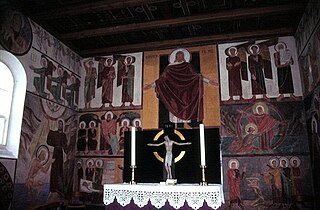
Elof Christian Risebye was a Danish painter. He became known as the "painter of grief" for his paintings of coffins and corpses in the 1930s.
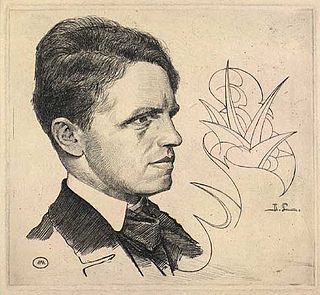
Jens Martin Victor Lund was a Danish painter, designer and graphic artist.

Suzette Catherine Holten was a Danish painter and ceramist who belonged to the Skovgaard family of artists. In addition to landscapes, flower paintings and portraits, she created and decorated ceramics and also worked as an embroiderer. As a woman, she was unable to achieve the same level of acclaim as her father or brothers.
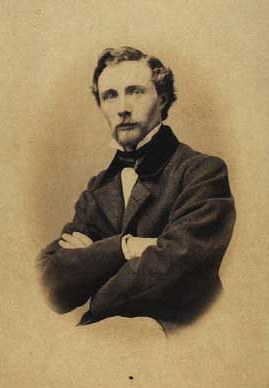
Herman Carl Siegumfeldt was a Danish genre and landscape painter.

Henriette Christine Hahn-Brinckmann (1862–1934) was a Danish-German painter and lithographer. Among her most interesting works are those created with Japanese woodcutting tools which her husband, the museum curator Justus Brinckmann, brought to Hamburg.

Georgia Maria Luise Skovgaard née Schouw (1828–1868) was a Danish embroiderer who is remembered above all for works depicting Danish flora, many of which were based on the artwork of her husband, the Golden Age painter P.C. Skovgaard. After her early death, her designs lived on after her student Kristiane Konstantin-Hansen used them to develop her own embroidery business.

Siegfried Wagner was a Danish sculptor.
Olga Rosalie Aloisa Wagner née Packness (1873–1963) was a Danish painter and sculptor. After specializing in painting at the Royal Danish Academy of Fine Arts, she was trained as a sculptor by her husband Siegfried. She worked together with him throughout her life, developing her own style. She is remembered for her large stone and bronze figures but also created smaller works in porcelain while working with Bing & Grøndahl and the Royal Danish Porcelain Factory.



















